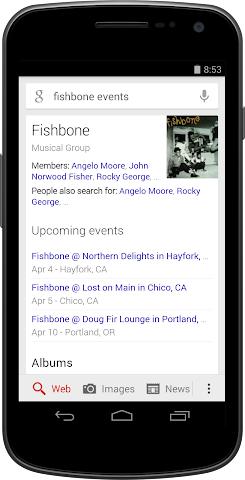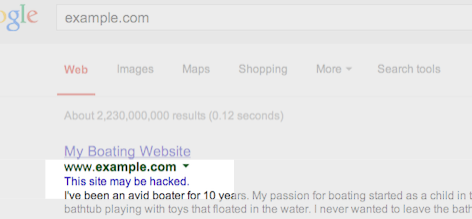Search Off The Record podcast – behind the scenes with Search Relations
As the Search Relations team at Google, we’re here to help webmasters be successful with their websites in Google Search. We write on this blog, create and maintain the Google Search documentation, produce videos on our YouTube channel – and now we’re …
Introducing the new Webmaster Video Series
Google has a broad range of resources to help you better understand your website and improve its performance. This Webmaster Central Blog, the Help Center, the Webmaster forum, and the recently released Search Engine Optimization (SEO) Starter Guide a…
Introducing the new Webmaster Video Series
Google has a broad range of resources to help you better understand your website and improve its performance. This Webmaster Central Blog, the Help Center, the Webmaster forum, and the recently released Search Engine Optimization (SEO) Starter Guide a…
Finding more mobile-friendly search results
Webmaster level: all
When it comes to search on mobile devices, users should get the most relevant and timely results, no matter if the information lives on mobile-friendly web pages or apps. As more people use mobile devices to access the internet, our algorithms have to adapt to these usage patterns. In the past, we’ve made updates to ensure a site is configured properly and viewable on modern devices. We’ve made it easier for users to find mobile-friendly web pages and we’ve introduced App Indexing to surface useful content from apps. Today, we’re announcing two important changes to help users discover more mobile-friendly content:
1. More mobile-friendly websites in search results
Starting April 21, we will be expanding our use of mobile-friendliness as a ranking signal. This change will affect mobile searches in all languages worldwide and will have a significant impact in our search results. Consequently, users will find it easier to get relevant, high quality search results that are optimized for their devices.
To get help with making a mobile-friendly site, check out our guide to mobile-friendly sites. If you’re a webmaster, you can get ready for this change by using the following tools to see how Googlebot views your pages:
- If you want to test a few pages, you can use the Mobile-Friendly Test.
- If you have a site, you can use your Webmaster Tools account to get a full list of mobile usability issues across your site using the Mobile Usability Report.
2. More relevant app content in search results
Starting today, we will begin to use information from indexed apps as a factor in ranking for signed-in users who have the app installed. As a result, we may now surface content from indexed apps more prominently in search. To find out how to implement App Indexing, which allows us to surface this information in search results, have a look at our step-by-step guide on the developer site.
If you have questions about either mobile-friendly websites or app indexing, we’re always happy to chat in our Webmaster Help Forum.
Posted by Takaki Makino, Chaesang Jung, and Doantam Phan
Case Studies: Fixing Hacked Sites
Webmaster Level: All Every day, thousands of websites get hacked. Hacked sites can harm users by serving malicious software, collecting personal information, or redirecting them to sites they didn’t intend to visit. Webmasters want to fix hacked sites …
Are you a robot? Introducing “No CAPTCHA reCAPTCHA”
But, we figured it would be easier to just directly ask our users whether or not they are robots—so, we did! We’ve begun rolling out a new API that radically simplifies the reCAPTCHA experience. We’re calling it the “No CAPTCHA reCAPTCHA” and this is how it looks:
On websites using this new API, a significant number of users will be able to securely and easily verify they’re human without actually having to solve a CAPTCHA. Instead, with just a single click, they’ll confirm they are not a robot.
A brief history of CAPTCHAs
While the new reCAPTCHA API may sound simple, there is a high degree of sophistication behind that modest checkbox. CAPTCHAs have long relied on the inability of robots to solve distorted text. However, our research recently showed that today’s Artificial Intelligence technology can solve even the most difficult variant of distorted text at 99.8% accuracy. Thus distorted text, on its own, is no longer a dependable test.
To counter this, last year we developed an Advanced Risk Analysis backend for reCAPTCHA that actively considers a user’s entire engagement with the CAPTCHA—before, during, and after—to determine whether that user is a human. This enables us to rely less on typing distorted text and, in turn, offer a better experience for users. We talked about this in our Valentine’s Day post earlier this year.
The new API is the next step in this steady evolution. Now, humans can just check the box and in most cases, they’re through the challenge.
Are you sure you’re not a robot?
However, CAPTCHAs aren’t going away just yet. In cases when the risk analysis engine can’t confidently predict whether a user is a human or an abusive agent, it will prompt a CAPTCHA to elicit more cues, increasing the number of security checkpoints to confirm the user is valid.
Making reCAPTCHAs mobile-friendly
This new API also lets us experiment with new types of challenges that are easier for us humans to use, particularly on mobile devices. In the example below, you can see a CAPTCHA based on a classic Computer Vision problem of image labeling. In this version of the CAPTCHA challenge, you’re asked to select all of the images that correspond with the clue. It’s much easier to tap photos of cats or turkeys than to tediously type a line of distorted text on your phone.
As more websites adopt the new API, more people will see “No CAPTCHA reCAPTCHAs”. Early adopters, like Snapchat, WordPress, Humble Bundle, and several others are already seeing great results with this new API. For example, in the last week, more than 60% of WordPress’ traffic and more than 80% of Humble Bundle’s traffic on reCAPTCHA encountered the No CAPTCHA experience—users got to these sites faster. To adopt the new reCAPTCHA for your website, visit our site to learn more.
Humans, we’ll continue our work to keep the Internet safe and easy to use. Abusive bots and scripts, it’ll only get worse—sorry we’re (still) not sorry.
Posted by Vinay Shet, Product Manager, reCAPTCHA
Bring your local business online — no website required!
Webmaster Level: Beginner
“Hey, how do I get my business on the web?” Having worked at Google for nine years, if I had a penny for every time someone asked me that question… :) To answer, today we’re releasing a short video series (30 minutes total!), sharing the same advice we’d give to our friends and family. It’s the advice I’d give to my sister, Marnie, who owns a jewelry store, or my cousin, Scott, who works as a realtor. Video spoiler alert: You won’t need to make a website, but you definitely need a way for your local business to reach potential customers using their mobile phones, tablets, or desktop computers.
The great thing about video is that you can pause at any time and work at your own pace. Next time you hear the question: “How do I get my business on Google?”, please share the link and let’s get more local businesses online!
Series: Build an online presence for your local business
Video #1: Introduction and hot topics (3:22)
Meet my sister, Marnie, who owns a jewelry store and my cousin, Scott, who works as a realtor. Follow them as we talk about the big changes in the last decade, such as making sure your business can reach customers at work, home, or on-the-go using their mobile phones.
Video #2: Determine your business’ value-add and online goal (4:08)
With the example of Scott, the realtor, you’ll learn about the marketing funnel, setting an online goal, and highlighting what makes your business special.
Video #3. Find potential customers (7:41)
Marnie and Scott figure out their customers’ most common journeys to reach their business. We’ll use their examples to brainstorm how you can reach customers on review sites, through search engines, maps apps, and social and professional networking sites.
Video #4: Basic implementation and best practices (5:23)
The fundamentals and best practices to take your business from offline to online!
Video #5: Differentiate your business from the competition (5:09)
With Scott’s business as a realtor, see how to demonstrate that your local business is the best choice for customers by adding photos, videos, and getting reviews.
Video #6: Engage customers with a holistic online identity (4:51)
We’ll end the series by showing how Scott makes sure his online presence sends a cohesive message to customers and answers all their common questions. :)
Written by Maile Ohye, Developer Programs Tech Lead
How To Create A 301 Redirect Map
Overhauling your site? Without a 301 redirect map, you risk losing valuable search equity.
The post How To Create A 301 Redirect Map appeared first on Search Engine Land.
Please visit Search Engine Land for the full article.
User-Centered SEO: Creating Long-Term Value
CMOs understand that by its very nature, SEO rarely stays the same for long. The shift to putting end customers and users front and center is quite different from SEO practices of yesteryear. While this new SEO direction may seem daunting, it also opens up a huge realm of opportunity for those that…
Please visit Search Engine Land for the full article.
Webmaster Academy now available in 22 languages
Today, the new Webmaster Academy goes live in 22 languages! New or beginner webmasters speaking a multitude of languages can now learn the fundamentals of making a great site, providing an enjoyable user experience, and ranking well in search results. And if you think you’re already familiar with these topics, take the quizzes at the end of each module to prove it :).
So give Webmaster Academy a read in your preferred language and let us know in the comments or help forum what you think. We’ve gotten such great and helpful feedback after the English version launched this past March so we hope this straightforward and easy-to-read guide can be helpful (and fun!) to everyone.
Let’s get great sites and searchable content up and running around the world.
Posted by Mary Chen, Webmaster Outreach
#NoHacked: a global campaign to spread hacking awareness
Webmaster level: All
This June, we introduced a weeklong social campaign called #NoHacked. The goals for #NoHacked are to bring awareness to hacking attacks and offer tips on how to keep your sites safe from hackers.
We held the campaign in 11 languages on multiple channels including Google+, Twitter and Weibo. About 1 million people viewed our tips and hundreds of users used the hashtag #NoHacked to spread awareness and to share their own tips. Check them out below!
Posts we shared during the campaign:
 https://plus.google.com/+GoogleWebmasters/posts/1BzXjgJMGFU
https://plus.google.com/+GoogleWebmasters/posts/1BzXjgJMGFU
 https://plus.google.com/+GoogleWebmasters/posts/TMhfwQG3p8P
https://plus.google.com/+GoogleWebmasters/posts/TMhfwQG3p8P
 https://plus.google.com/+GoogleWebmasters/posts/AcUS4WhF6LL
https://plus.google.com/+GoogleWebmasters/posts/AcUS4WhF6LL
Some of the many tips shared by users across the globe:
- Pablo Silvio Esquivel from Brazil recommends users not to use pirated software (source)
- Rens Blom from the Netherlands suggests using different passwords for your accounts, changing them regularly, and using an extra layer of security such as two-step authentication (source)
- Дмитрий Комягин from Russia says to regularly monitor traffic sources, search queries and landing pages, and to look out for spikes in traffic (source)
- 工務店コンサルタント from Japan advises everyone to choose a good hosting company that’s knowledgeable in hacking issues and to set email forwarding in Webmaster Tools (source)
- Kamil Guzdek from Poland advocates changing the default table prefix in wp-config to a custom one when installing a new WordPress to lower the risk of the database from being hacked (source)
Hacking is still a surprisingly common issue around the world so we highly encourage all webmasters to follow these useful tips. Feel free to continue using the hashtag #NoHacked to share your own tips or experiences around hacking prevention and awareness. Thanks for supporting the #NoHacked campaign!
And in the unfortunate event that your site gets hacked, we’ll help you toward a speedy and thorough recovery:
Posted by your friendly #NoHacked helpers
HTTPS as a ranking signal
Webmaster level: all
Security is a top priority for Google. We invest a lot in making sure that our services use industry-leading security, like strong HTTPS encryption by default. That means that people using Search, Gmail and Google Drive, for example, automatically have a secure connection to Google.
Beyond our own stuff, we’re also working to make the Internet safer more broadly. A big part of that is making sure that websites people access from Google are secure. For instance, we have created resources to help webmasters prevent and fix security breaches on their sites.
We want to go even further. At Google I/O a few months ago, we called for “HTTPS everywhere” on the web.
We’ve also seen more and more webmasters adopting HTTPS (also known as HTTP over TLS, or Transport Layer Security), on their website, which is encouraging.
For these reasons, over the past few months we’ve been running tests taking into account whether sites use secure, encrypted connections as a signal in our search ranking algorithms. We’ve seen positive results, so we’re starting to use HTTPS as a ranking signal. For now it’s only a very lightweight signal — affecting fewer than 1% of global queries, and carrying less weight than other signals such as high-quality content — while we give webmasters time to switch to HTTPS. But over time, we may decide to strengthen it, because we’d like to encourage all website owners to switch from HTTP to HTTPS to keep everyone safe on the web.
In the coming weeks, we’ll publish detailed best practices (we’ll add a link to it from here) to make TLS adoption easier, and to avoid common mistakes. Here are some basic tips to get started:
- Decide the kind of certificate you need: single, multi-domain, or wildcard certificate
- Use 2048-bit key certificates
- Use relative URLs for resources that reside on the same secure domain
- Use protocol relative URLs for all other domains
- Check out our Site move article for more guidelines on how to change your website’s address
- Don’t block your HTTPS site from crawling using robots.txt
- Allow indexing of your pages by search engines where possible. Avoid the noindex robots meta tag.
If your website is already serving on HTTPS, you can test its security level and configuration with the Qualys Lab tool. If you are concerned about TLS and your site’s performance, have a look at Is TLS fast yet?. And of course, if you have any questions or concerns, please feel free to post in our Webmaster Help Forums.
We hope to see more websites using HTTPS in the future. Let’s all make the web more secure!
Posted by Zineb Ait Bahajji and Gary Illyes, Webmaster Trends Analysts
Introducing the Google News Publisher Center
Webmaster level: All
If you’re a news publisher, your website has probably evolved and changed over time — just like your stories. But in the past, when you made changes to the structure of your site, we might not have discovered your new content. That meant a lost opportunity for your readers, and for you. Unless you regularly checked Webmaster Tools, you might not even have realized that your new content wasn’t showing up in Google News. To prevent this from happening, we are letting you make changes to our record of your news site using the just launched Google News Publisher Center.
With the Publisher Center, your potential readers can be more informed about the articles they’re clicking on and you benefit from better discovery and classification of your news content. After verifying ownership of your site using Google Webmaster Tools, you can use the Publisher Center to directly make the following changes:
- Update your news site details, including changing your site name and labeling your publication with any relevant source labels (e.g., “Blog”, “Satire” or “Opinion”)
- Update your section URLs when you change your site structure (e.g., when you add a new section such as http://example.com/2014commonwealthgames or http://example.com/elections2014)
- Label your sections with a specific topic (e.g., “Technology” or “Politics”)
Whenever you make changes to your site, we’d recommend also checking our record of it in the Publisher Center and updating it if necessary.
Try it out, or learn more about how to get started.
At the moment the tool is only available to publishers in the U.S. but we plan to introduce it in other countries soon and add more features. In the meantime, we’d love to hear from you about what works well and what doesn’t. Ultimately, our goal is to make this a platform where news publishers and Google News can work together to provide readers with the best, most diverse news on the web.
Posted by Eric Weigle, Software Engineer
Making your site more mobile-friendly with PageSpeed Insights
To help developers and webmasters make their pages mobile-friendly, we recently updated PageSpeed Insights with additional recommendations on mobile usability.
Poor usability can diminish the benefits of a fast page load. We know the average mobile page takes more than 7 seconds to load, and by using the PageSpeed Insights tool and following its speed recommendations, you can make your page load much faster. But suppose your fast mobile site loads in just 2 seconds instead of 7 seconds. If mobile users still have to spend another 5 seconds once the page loads to pinch-zoom and scroll the screen before they can start reading the text and interacting with the page, then that site isn’t really fast to use after all. PageSpeed Insights’ new User Experience rules can help you find and fix these usability issues.
These new recommendations currently cover the following areas:
- Configure the viewport: Without a meta-viewport tag, modern mobile browsers will assume your page is not mobile-friendly, and will fall back to a desktop viewport and possibly apply font-boosting, interfering with your intended page layout. Configuring the viewport to width=device-width should be your first step in mobilizing your site.
- Size content to the viewport: Users expect mobile sites to scroll vertically, not horizontally. Once you’ve configured your viewport, make sure your page content fits the width of that viewport, keeping in mind that not all mobile devices are the same width.
- Use legible font sizes: If users have to zoom in just to be able read your article text on their smartphone screen, then your site isn’t mobile-friendly. PageSpeed Insights checks that your site’s text is large enough for most users to read comfortably.
- Size tap targets appropriately: Nothing’s more frustrating than trying to tap a button or link on a phone or tablet touchscreen, and accidentally hitting the wrong one because your finger pad is much bigger than a desktop mouse cursor. Make sure that your mobile site’s touchscreen tap targets are large enough to press easily.
- Avoid plugins: Most smartphones don’t support Flash or other browser plugins, so make sure your mobile site doesn’t rely on plugins.
These rules are described in more detail in our help pages. When you’re ready, you can test your pages and the improvements you make using the PageSpeed Insights tool. We’ve also updated PageSpeed Insights to use a mobile friendly design, and we’ve translated our documents into additional languages.
As always, if you have any questions or feedback, please post in our discussion group.
Posted by Matthew Steele and Doantam Phan, PageSpeed Insights team
Webmaster Guidelines for sneaky redirects updated
Webmaster Level: AllRedirects are often used by webmasters to help forward visitors from one page to another. They are a normal part of how the web operates, and are very valuable when well used. However, some redirects are designed to manipulate or de…
Introducing our global Google+ page for webmasters
We’ve recently launched our global Google Webmasters Google+ page. Have you checked it out yet? Our page covers a plethora of topics:
- Official news and announcements like when our blog launched en français
- Tips such as how to handle 404s correctly
- Q&A office hours with our team
- Exclusive behind the scenes including planking puns and adventures with Googlebot
Follow us at google.com/+GoogleWebmasters and let us know in the comments what else you’d like to see on our page! If you speak Italian, Japanese, Russian or Spanish, be sure to also join one of our webmaster communities to stay up-to-date on language and region-specific news.
 |
| Hello from around the world! |
Google Adds Shopping Campaigns Features, Says Regular PLA Campaigns To Sunset In August 2014
Google introduced Shopping campaigns to all advertisers running Product Listing Ads (PLAs) in February as a way to simplify PLA set up and management. Today, Google announced some new features that have been rolling out in response to advertiser feedba…
Introducing the new Webmaster Academy
Our Webmaster Academy is now available with new and targeted content!
Two years ago, Webmaster Academy launched to teach new and beginner webmasters how to make great websites. In addition to adding new content, we’ve now expanded and improved information on three important topics:
- Making a great site that’s valuable to your audience (Module 1)
- Learning how Google sees and understands your site (Module 2)
- Communicating with Google about your site (Module 3)
Enjoy, learn, and share your feedback!
Posted by Mary Chen, Webmaster Outreach Team
Musical artists: your official tour dates in the Knowledge Graph
Webmaster level: all
When music lovers search for their favorite band on Google, we often show them a Knowledge Graph panel with lots of information about the band, including the band’s upcoming concert schedule. It’s important to fans and artists alike that this schedule be accurate and complete. That’s why we’re trying a new approach to concert listings. In our new approach, all concert information for an artist comes directly from that artist’s official website when they add structured data markup.
If you’re the webmaster for a musical artist’s official website, you have several choices for how to participate:
- You can implement schema.org markup on your site. That’s easier than ever, since we’re supporting the new JSON-LD format (alongside RDFa and microdata) for this feature.
- Even easier, you can install an events widget that has structured data markup built in, such as Bandsintown, BandPage, ReverbNation, Songkick, or GigPress.
- You can label the site’s events with your mouse using Google’s point-and-click webmaster tool: Data Highlighter.
All these options are explained in detail in our Help Center. If you have any questions, feel free to ask in our Webmaster Help forums. So don’t you worry `bout a schema.org/Thing … just mark up your site’s events and let the good schema.org/Times roll!
Posted by Justin Boyan, Product Manager, Google Search
3 tips to find hacking on your site, and ways to prevent and fix it
Google shows this message in search results for sites that we believe may have been compromised.You might not think your site is a target for hackers, but it’s surprisingly common. Hackers target large numbers of sites all over the web in order to exploit the sites’ users or reputation.
One common way hackers take advantage of vulnerable sites is by adding spammy pages. These spammy pages are then used for various purposes, such as redirecting users to undesired or harmful destinations. For example, we’ve recently seen an increase in hacked sites redirecting users to fake online shopping sites.
Once you recognize that your website may have been hacked, it’s important to diagnose and fix the problem as soon as possible. We want webmasters to keep their sites secure in order to protect users from spammy or harmful content.
3 tips to help you find hacked content on your site
- Check your site for suspicious URLs or directories
Keep an eye out for any suspicious activity on your site by performing a “site:” search of your site in Google, such as [site:example.com]. Are there any suspicious URLs or directories that you do not recognize?You can also set up a Google Alert for your site. For example, if you set a Google Alert for [site:example.com (viagra|cialis|casino|payday loans)], you’ll receive an email when these keywords are detected on your site.
- Look for unnatural queries on the Search Queries page in Webmaster Tools
The Search Queries page shows Google Web Search queries that have returned URLs from your site. Look for unexpected queries as it can be an indication of hacked content on your site.Don’t be quick to dismiss queries in different languages. This may be the result of spammy pages in other languages placed on your website.
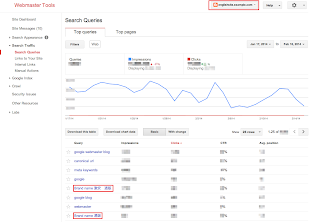
Example of an English site hacked with Japanese content. - Enable email forwarding in Webmaster Tools
Google will send you a message if we detect that your site may be compromised. Messages appear in Webmaster Tools’ Message Center but it’s a best practice to also forward these messages to your email. Keep in mind that Google won’t be able to detect all kinds of hacked content, but we hope our notifications will help you catch things you may have missed.
Tips to fix and prevent hacking
- Stay informed
The Security Issues section in Webmaster Tools will show you hacked pages that we detected on your site. We also provide detailed information to help you fix your hacked site. Make sure to read through this documentation so you can quickly and effectively fix your site. - Protect your site from potential attacks
It’s better to prevent sites from being hacked than to clean up hacked content. Hackers will often take advantage of security vulnerabilities on commonly used website management software. Here are some tips to keep your site safe from hackers: - Always keep the software that runs your website up-to-date.
- If your website management software tools offer security announcements, sign up to get the latest updates.
- If the software for your website is managed by your hosting provider, try to choose a provider that you can trust to maintain the security of your site.
We hope this post makes it easier for you to identify, fix, and prevent hacked spam on your site. If you have any questions, feel free to post in the comments, or drop by the Google Webmaster Help Forum.
If you find suspicious sites in Google search results, please report them using the Spam Report tool.
Posted by Megumi Hitomi, Japanese Search Quality Team
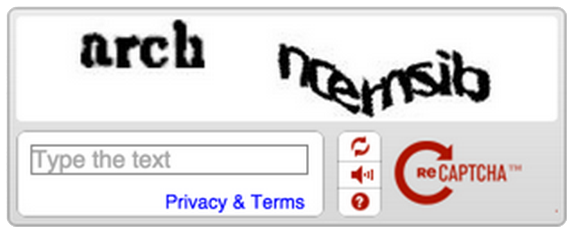


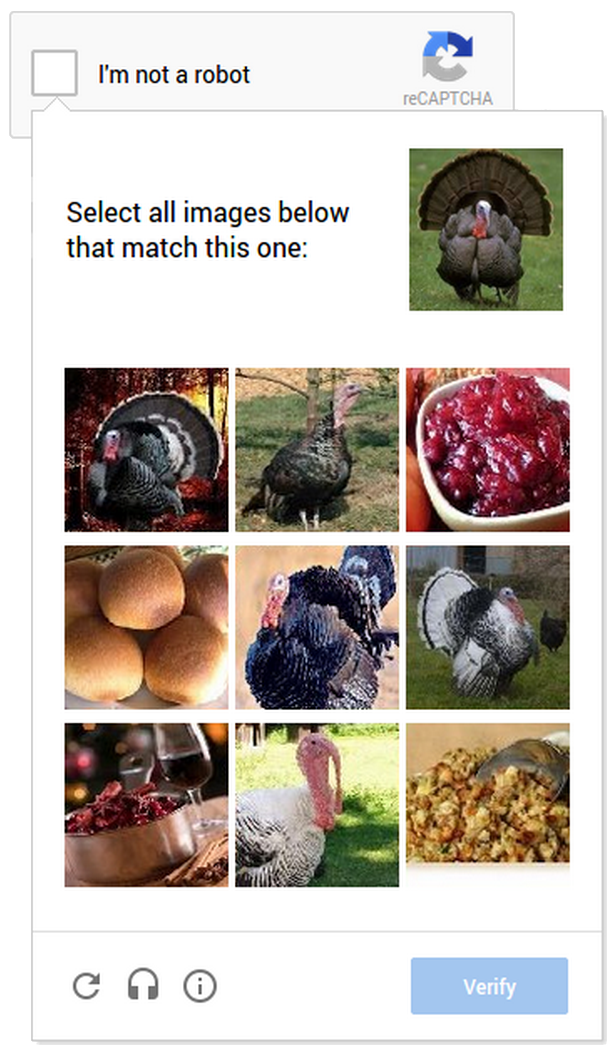
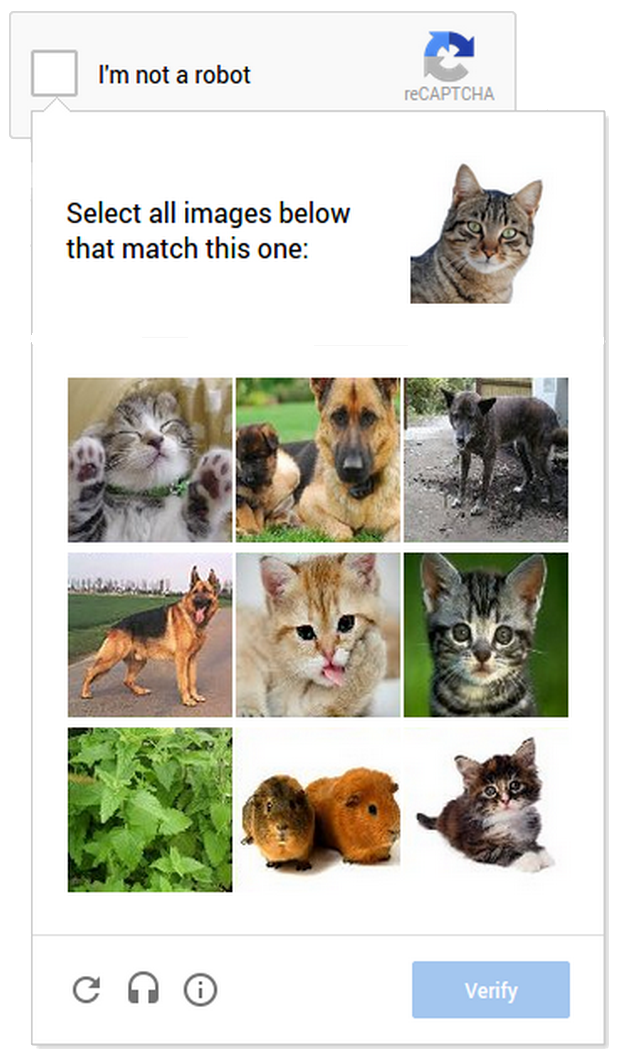

 https://plus.google.com/+GoogleWebmasters/posts/DUTpSGmkBUP
https://plus.google.com/+GoogleWebmasters/posts/DUTpSGmkBUP https://plus.google.com/+GoogleWebmasters/posts/UjZRbySM5gM
https://plus.google.com/+GoogleWebmasters/posts/UjZRbySM5gM


